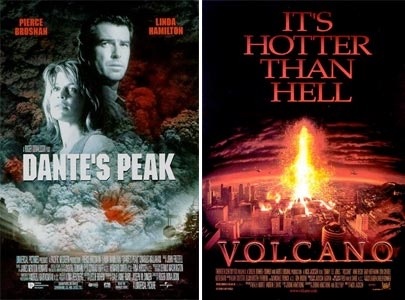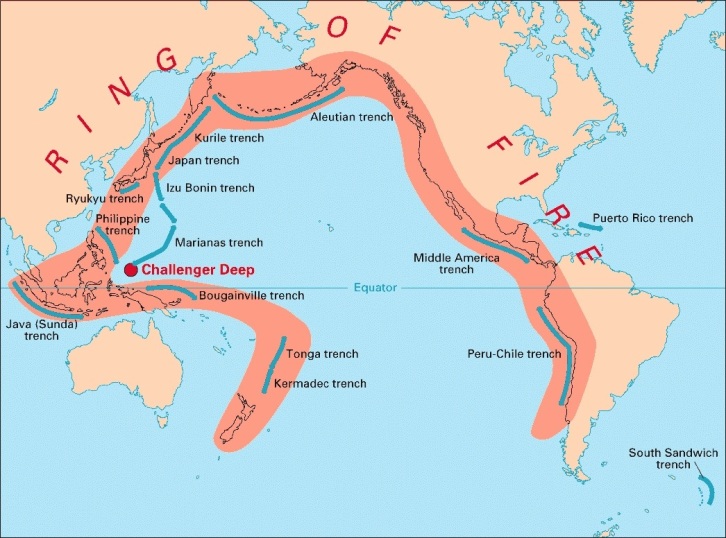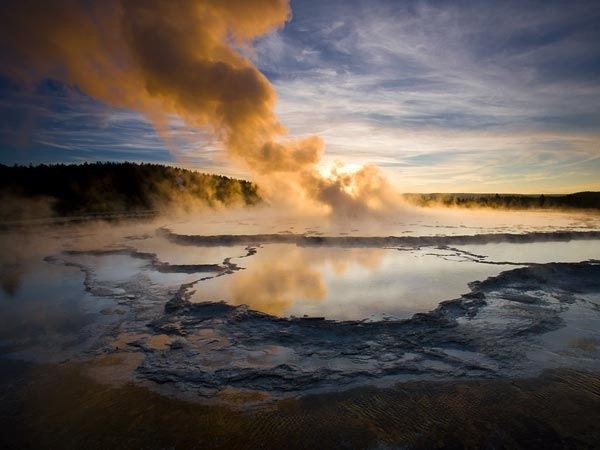Go with the pyroclastic flow
ByHello fellow geoggers! For today’s post I will be talking about a hazard that has inspired legends, mythology and blockbuster films starring Piers Brosnan and Tommy Lee Jones; the Volcano. But what actually is a volcano other than a huge rock that shoots lava out of it’s point? Well to start I have again used Dosomething.org (whose website you can find by clicking here) to find facts about the volcano (if you want to find more about the Dosomething website then either click the link above or read my other post, Twister and Shout, where I have briefly talked about what the website does).
Firstly a volcano is a mountain that opens downward to a pool of molten rock below the surface of the earth. When pressure builds up, eruptions occur.
In an eruption, gases and rock shoot up through the opening and spill over or fill the air with lava fragments. Eruptions can cause lava flows, hot ash flows, mudslides, lahars, pyroclastic flow, avalanches, falling ash and floods.
The danger area around a volcano covers about a 20-mile radius.
Fresh volcanic ash, made of pulverized rock, can be harsh, acidic, gritty, glassy and smelly. The ash can cause damage to the lungs of older people, babies and people with respiratory problems.
Volcanic lightning occurs mostly within the cloud of ash during an eruption, and is created by the friction of the ash rushing to the surface. Roughly 200 accounts of this lightning have been witnessed live.
An erupting volcano can trigger tsunamis, flash floods, earthquakes, mudflows and rockfalls.
More than 80% of the earth’s surface is volcanic in origin. The sea floor and some mountains were formed by countless volcanic eruptions. Gaseous emissions from volcano formed the earth’s atmosphere.
There are more than 500 active volcanoes in the world. More than half of these volcanoes are part of the “Ring of Fire,” a region that encircles the Pacific Ocean.
Active volcanoes in the U.S. are found mainly in Hawaii, Alaska, California, Oregon and Washington, but the greatest chance of eruptions near areas where many people live is in Hawaii and Alaska.
The sound of an erupting volcano can be quiet and hissing or explosive and booming. The loud cracks travel hundreds of miles and do the most damage, including hearing loss and broken glass.
The most deadly eruptions have occurred in Indonesia, with tens of thousands of lives lost to starvation, tsunami (as a result of the eruption), ash flows, and mudflows.
Since the start of this topic in college/sixth form I have found that there are three main types of volcanoes due to it’s type of lava; Basaltic (The low-viscosity basaltic magma results in the easy release of gases. The eruption is non-violent. This usually results in a low-angle volcanic dome – think of a shield – or lava plateaux e.g. The Hawaiian Islands and Icelandic volcanoes), Andesitic (the high-eruption columns spread gases over large distances. As the eruption wanes there may be collapse of lava columns and resulting pyroclastic flows and surges. The eruption of Mount Pinatubo in 1991 sent a plume of tephra 30km high into the atmosphere) and Rhyolitic (the lava dome blocks the volcano so that the eruption is sudden and violent through a weakness in the side of the volcano or in some cases the top to produce a summit crater called a caldera. Examples include Mt Pelé, Mt St Helens and Krakatoa). I have also found out that the viscosity of the lava heavily affects the outcome of a specific eruption. Viscosity is the term used to describe how thick and/or runny the lava is, I.e. low viscosity = runny but high viscosity = a jam-like thickness. There are 3 factors that affect the viscosity, first the temperature can affect it, at higher temperatures atoms spread out and decrease in density, so magma at a higher temperature is less viscous and will flow more easily, secondly dissolved gases make the magma more fluid and buoyant. The higher temperature, the more the gases remain dissolved and the less viscous the magma. Thirdly, the amount of silica (SiO2) in the magma affects the flow. Silica has close jointing and packing of atoms and makes flow slow, and it is more difficult for gases to escape.
To finish off the post I thought that it would be interesting to try and find the top 10 most dangerous active volcanoes in the world (active meaning that it could erupt at any moment). To find this information I looked at many lists and found that this one created by alltoptens (whose website you can find here ) had both the list that I most agreed with and a suitable description of each volcano, so without further ado here is the top 10 most dangerous volcanoes.
10. Mauna Loa Volcano
This is the biggest volcano in the whole world in conditions of amount. It embraces 18k cubic miles of molten rock and this is at the 120 ft height on top of the level of sea. This was exploding for over 700,000 years.
9. Taal Volcano
It is situated on the Luzon’s island. This Tall volcano is situated at the mid position of Tall Lake that was in shaped of serious volcanic outbreak.
8. Mt. Merapi
It is situated in the Yogyakarta city, Indonesia. Yogyakarta city is the house for numbers of people. It was the very active and dangerous volcano in the middle of 130 Indonesia’s volcanoes.
7. Santa Maria
Situated 130 km left from the Guatemala City. The eruption of volcano occurs because of the clash among Carribean Plate and Cocos Plate. The newest outbreak occurred in the year 2011.
6. Ulawun
It is situated in Papau the region of New Guinea has on track to explode from the starting of 18th century. From that time it has exploded almost 22 times.
5. Galeras
It has been situated close to the Ecuador border. The very active volcanoes in the region of Columbia, it has been constantly exploding for over 1,000 centuries.
4. Sakurajima
This mountain of volcano was situated in its split island. Later than this eruption of volcano, the lava run linked the mountain with the Japan’s Osumi Peninsula. This has been known as East’s Vesuvius. It supplies as the risk to 7 lack people of the Kagoshima city.
3. Mt. Nyiragongo
This is the only very active volcanoes in the region of Africa. It is situated in the Congo’s Democratic Republic; it has exploding from year 1882. The hollow inner side the mountain offers as the molten rock fluid’s holder.
2. Mt. Vesuvius
It is not just the only most hazardous volcanoes in the whole world but even the very thickly occupied volcano in the entire world. This Mt. Vesuvius volcano is situated at the Campagnia that is five miles left from the region of Naples. The Naples city has almost 3 million inhabitants.
1.Yellow Stone Caldera
This high voltage volcano is situated under the US, Yellow National Park. For your revelation this super volcano has not explode for the last 640,000 years. A query arises: How it can be on the go volcano so far? It was supposed that earlier than 640,000 years, this high voltage volcano has exploded. (Added note: this super volcano is supposed to be one of the biggest threats to human life on the planet, it is said that if this volcano erupted, then ash clouds would cover the whole of North America and then spread and start affecting the atmosphere of the whole planet, killing both crops and animals, and any land surrounding the initial point of eruption would basically speaking no longer exist…)
So that’s some facts about volcanoes. What did you think? Do you live or know anyone who lives in or near a volcanic danger zone? Have you ever witnessed an eruption? And did anyone enjoy watching the film Volcano? For answers to this or to comment on anything else please leave a message below. Thanks for reading and as always: keep geogging!



Where is the nearest volcano to the UK?
The nearest active Volcano to the UK is Katla in Iceland. It is 563 miles from the Isle of Lewis in Scotland. However, someone correct if I’m wrong, but I think that a lot of our mountains (one of the most famous examples being Mt Snowdon in Wales) were volcanoes that have now become extinct. I’m assuming that they’ve gone extinct because of moving tectonic plates and that most of the dangerous volcanoes are located above ‘hot spots’ and mountains in the UK probably were also over these hot spots but around millions of years ago, and since then we as a country have ‘moved’ and therefore are moving away from most hotspots, although that’s just a guess from other volcanic knowledge…